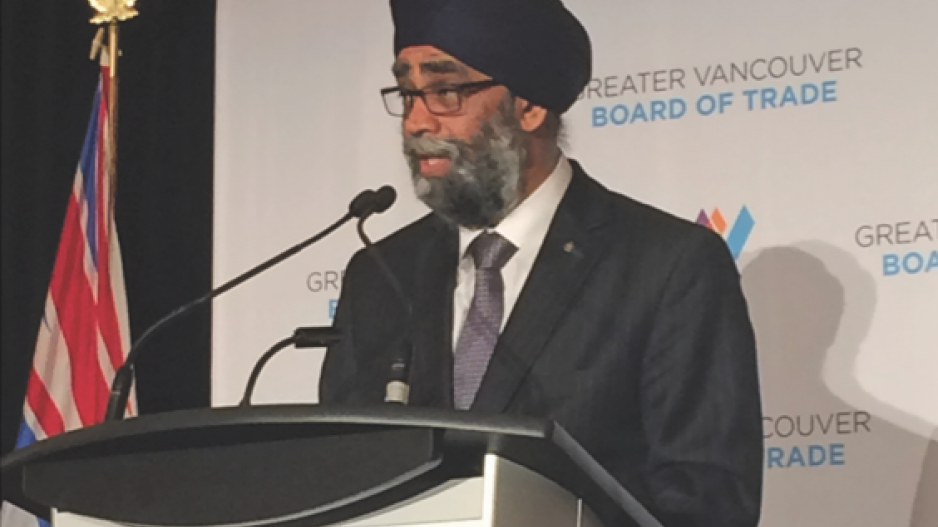BC’s aerospace sector isn’t the only one that stands to beneft from Canada’s new national defence spending plan – so might the high-tech sector.
Ottawa has committed to increasing defence spending to $32.7 billion by 2027 from $18.9 billion this year, boosting regular forces by 3,500, and increasing its fighter jet procurement plan to 88 from 65 jets, at a cost of between $15 billion and $19 billion.
Among the spending priorities is a commitment to enhance Canada’s Radarsat satellite system – something that could benefit MacDonald, Dettwiler and Associates Ltd. (TSX:MDA), which won a $706 million contract in 2013 to build, launch and operate three satellites for the Radarsat Constellation Mission.
MDA CEO Howard Lance welcomes the new defence policy’s focus on space-based communications.
“We applaud the renewed focus on partnering with industry to develop innovative new technologies,” he said. “This is an area that we will be tracking closely in order to help us to continue to develop leading-edge technologies right here in B.C.”
In a June 9 address to the Greater Vancouver Board of Trade, federal Defence Minister Harjit Sajjan said the private sector will be able to get in on $1.6 billion worth of spending on innovation in the armed forces.
“Taking a lesson from the high-tech sector, we will implement dedicated and funded programming to drive innovations from among small, medium and large enterprises which are crucial generators of innovation,” he said.
The $11 billion question for Canada’s aerospace sector is: will the F-35 stealth fighter jet be reconsidered, now that Ottawa’s purchase of 18 new Super Hornet fighter jets is in question?
It’s an important question for B.C. companies like Avcorp Industries Inc. (TSX:AVP), which has a $500 million contract to build folding wing assemblies for an F-35 variant designed for aircraft carriers, and ASCO Aerospace Canada Ltd., which has $40 million worth of contracts to build titanium and aluminum bulkheads for the F-35.
Future contracts with Lockheed Martin Corp. (NYSE:LMT), which is building the F-35, could be worth an estimated $11 billion to Canadian aerospace contractors – contracts that they might not win should Canada opt for the F/A-18 Super Hornet jet made by Boeing Co. (NYSE:BA) to replace its aging fleet of CF-18 fighter jets.
When the Trudeau Liberals took power, they withdrew Canada from the Joint Strike Fighter program – a consortium of 11 countries committed to buying the F-35 – over cost concerns.
Canada ended up ordering 18 Super Hornets from Boeing as part of an interim replacement program. But that deal is also now in question, thanks to a falling-out between Ottawa and Boeing, which has lodged formal complaints against Canada’s Bombardier Inc. (TSX:BBD.B).
Ottawa has pushed the pause button on the interim jet replacement program with Boeing.
Asked whether the F-35 could be back on the table, Sajjan told Business in Vancouver that Lockheed Martin can compete for the longer-term replacement program.
“The 88 aircraft will go through a proper competition,” he said. “Any company that can look at meeting the requirements of the military will be able to compete. It doesn’t matter what company it is.”
But if Ottawa does end up going with the Super Hornet for the interim replacement program, that would likely stack the deck against the F-35, because military brass prefer having a single fighter jet, not a mix.
Scott McCready, chairman of the Canadian Joint Industry Group (CJIG), which represents the Canadian aerospace industry on the F-35 program, said the industry wants to know if the F-35 will be considered for the interim program. That’s one question Sajjan has refused to answer.
While Canadian aerospace companies are likely to land contracts no matter which jet Canada decides to buy, Canadian companies that have F-35 contracts have made significant investments to win those contracts.
And there will be more F-35s built than any other fighter jet, because 11 countries have put in orders, so there are significantly more long-term contracts to be had on the F-35 than on any other jet.
“In the next 10 years, over 75% of the jets … sold are going to be F-35,” McCready said.
In addition to replacing the CF-18s, the new defence plan also calls for a replacement of Canada’s Twin Otters, which are made by Viking Air Ltd. in North Saanich.
Iain Christie, executive vice-president, Aerospace Industries Association of Canada, said B.C. aerospace companies will also benefit from long-term service and maintenance contracts.
“Don’t forget, those procurements will not only be to buy aircraft, but they will be to arrange for the in-service support for those aircraft,” Christie said. “B.C. has quite a concentration of service support companies.”
Aside from military hardware, Canada’s new defence strategy also focuses on intelligence and cybersecurity. Sajjan said Canada’s Armed Forces will work with academia and private enterprise to help it with innovation.
“Innovation is one of the principal objectives of our new policy because it gives the Canadian Armed Forces the ability to adapt quickly to changing threats and needs.”
A new Innovation for Defence Excellence and Security (IDEAS) program is being set up to encourage Canadian innovators to pitch their ideas to the military.
“Through IDEAS, we will invest $1.6 billion over the next 20 years in Canadian R&D about areas that are key to the areas of defence,” Sjjan said. “We will hold competitions that will allow any innovator to present their most creative solutions to our defence and security challenges.”




